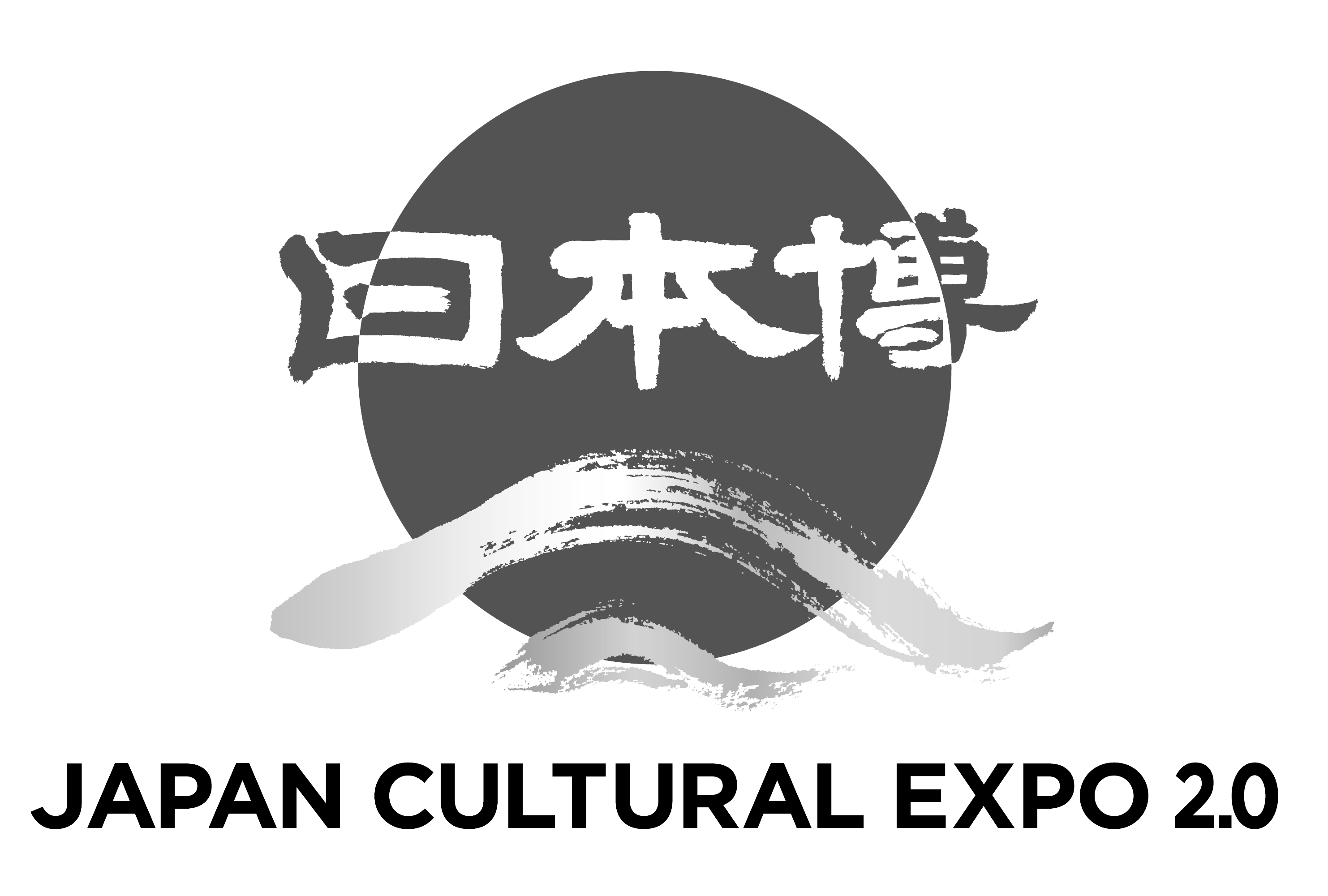Past Exhibition
The Elites Who Challenged Nihonga
―From Hishida Syunsō, Uemura Shōen and Kawabata Ryūshi to Matsuo Toshio
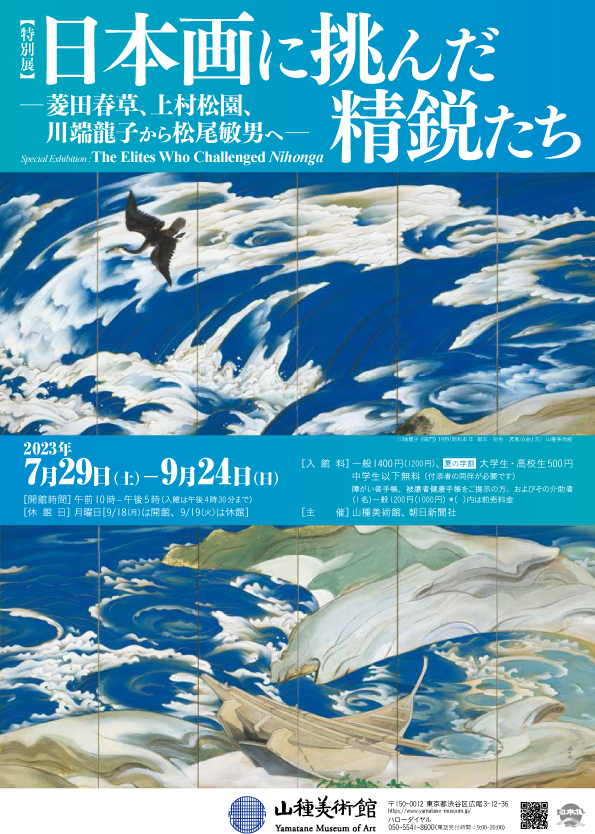
29 July (Sat.) 2023– 24 September (Sun.) 2023
(Closed on Mondays, except for 18 September.)
Hours: 10 am - 5 pm (Last admission at 4:30 pm)
Admission Fees: Adults: 1,400 yen; middle school and younger children: free of charge; Disability ID holders and one accompanying person: 1,200 yen each
*Discount for those who are wearing kimono: Discount of 200 yen for adults
Summer Student Discount: University and high school students: 1,100 yen → 500 yen
Organized by: Yamatane Museum of Art and The Asahi Shimbun Company.
Approximately 50 works in total are to be displayed.
Exhibition Overview
The history of nihonga from the modern period on is also the history of artists who have constantly sought to create paintings appropriate for their times. The Yamatane Museum of Art is pleased to present an exhibition tracing that history, from Meiji to today, through a group of masterpieces by the elite artists who have continued to take up the challenge of creating nihonga.
In the Meiji period, with the introduction of Western culture and the progressing modernization of Japanese society, artists engaged in ongoing explorations in their efforts to create Japanese paintings that were the equals of, or superior to, Western paintings. Yokoyama Taikan and Hishida Shunsō incorporated Western styles in the Japanese art tradition and showed their experimental works at the newly founded Inten (Japan Art Institute Exhibition), opening up new aspects of nihonga. In the subsequent Taisho and Showa periods, artists appeared who sought to combat the government-organized exhibitions and the Inten, which was dominant in the Japanese painting world. Tsuchida Bakusen and Ono Chikkyō were among the artists who formed the Kokuga Sōsaku Kyōkai (Association for the Creation of National Painting; now the Kokugakai), while Kawabata Ryūshi founded the Seiryūsha as an independent group of artists. Their efforts greatly stimulated the art world.
After World War II, under the impact of Japan’s defeat, the values expressed in conventional nihonga were questioned, and voices were heard calling for the extinction of nihonga. While experiencing an intense sense of crisis and discord, artists confronted tradition and sought to overcome those adverse circumstances through extensive research in a variety of styles and techniques. The Yamatane Museum of Art Award was established to support young artists devoting themselves to creating anew through that difficult period. Matsuo Toshio, Okamura Keizaburo, and many other artists who later became leaders in the art world submitted their ambitious, innovative work for that award, which became the gateway to success in nihonga, and went on to make great achievements.
This exhibition introduces a remarkable body of work, including After the Rain by Hishida Shunsō, who endeavored to express the atmosphere using his mōrōtai ("vague" or “indistinct") technique, without outlines, Fluffy Snowflakes by Uemura Shōen, who pioneered a path for living as a woman and an artist, Maelstroms at Naruto, by Kawabata Ryūshi, a painting produced with lavish use of a rare blue mineral pigment, azurite, that he showed at the noteworthy first Seiryūsha exhibition, and Flight (which received the Yamatane Museum of Art Award) by Matsuo Toshio, an artist who, having faced the call for the extinction of nihonga in his youth, went on to become one of Japan’s most prominent painters. Through this diverse group of works, from the Meiji period to the present, we invite you to view the trajectories of these superb artists who dared to create new styles of nihonga.
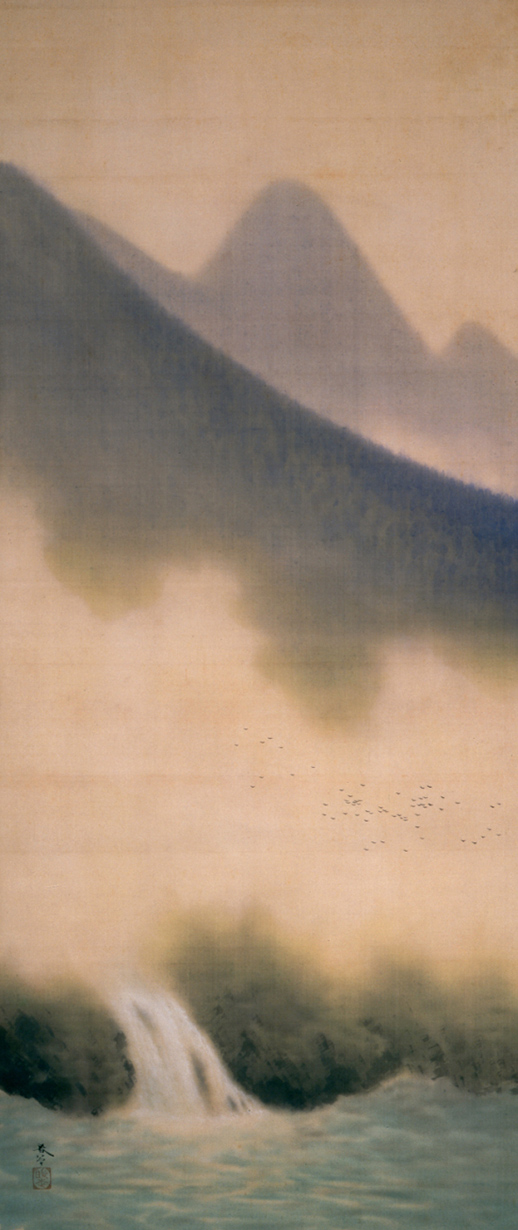
Hishida Shunsō, After the Rain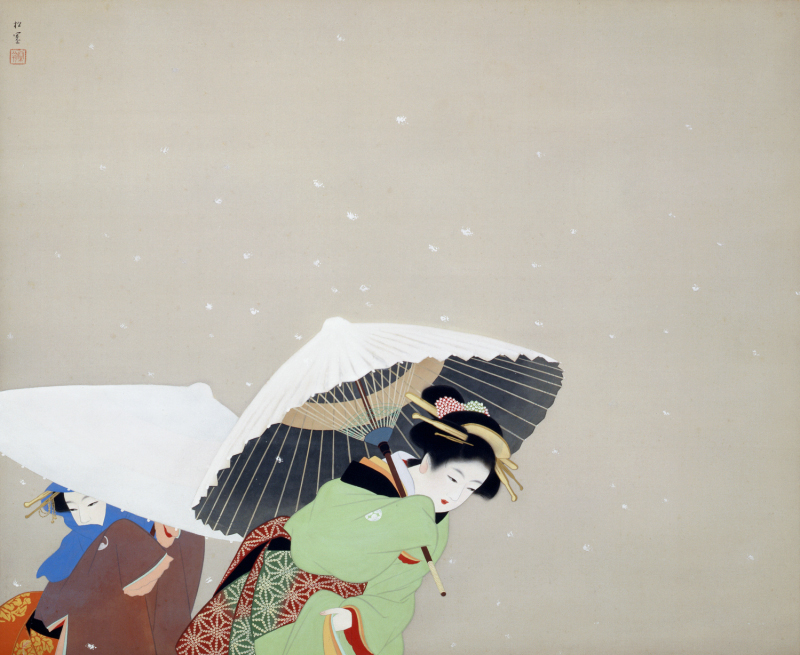
Uemura Shōen, Fluffy Snowflakes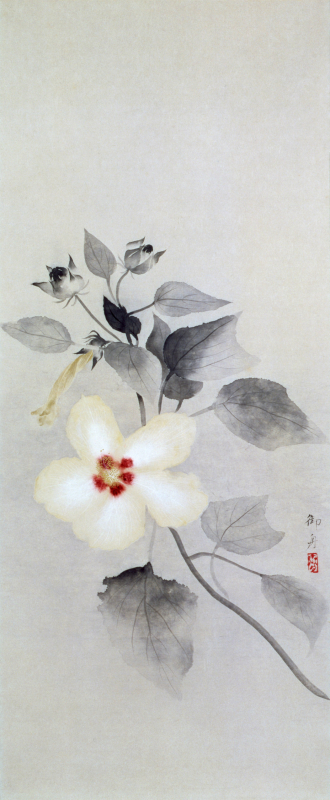
Hayami Gyoshū, White Cotton Roses
Tsuchida Bakusen, Oharame
Free with Museum admission.
Conduced in Japanese by a museum staff at 10:30 - 11:00 a.m. every Wednesday.
Reservation is not required (first-come basis, please directly come to the entrance hall at 10:00)






